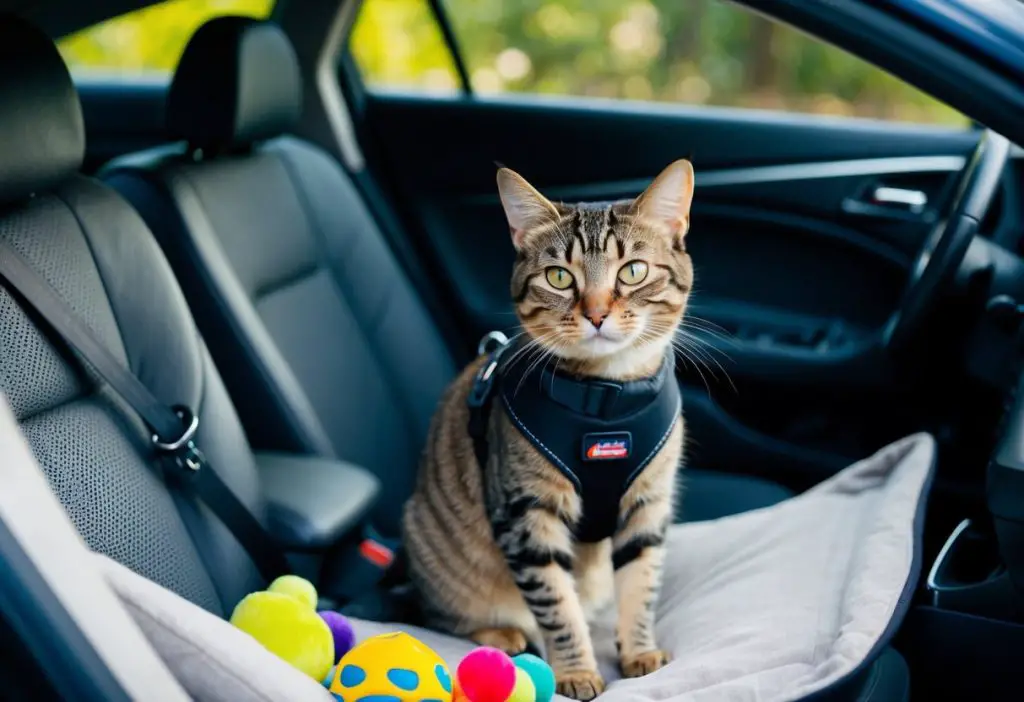Traveling with a cat can be a rewarding experience, but it requires some preparation. Knowing how to properly transport your cat can make the journey smoother and more enjoyable for both of you. Many cats are not fond of car rides, so it’s essential to take steps to help them feel more comfortable.
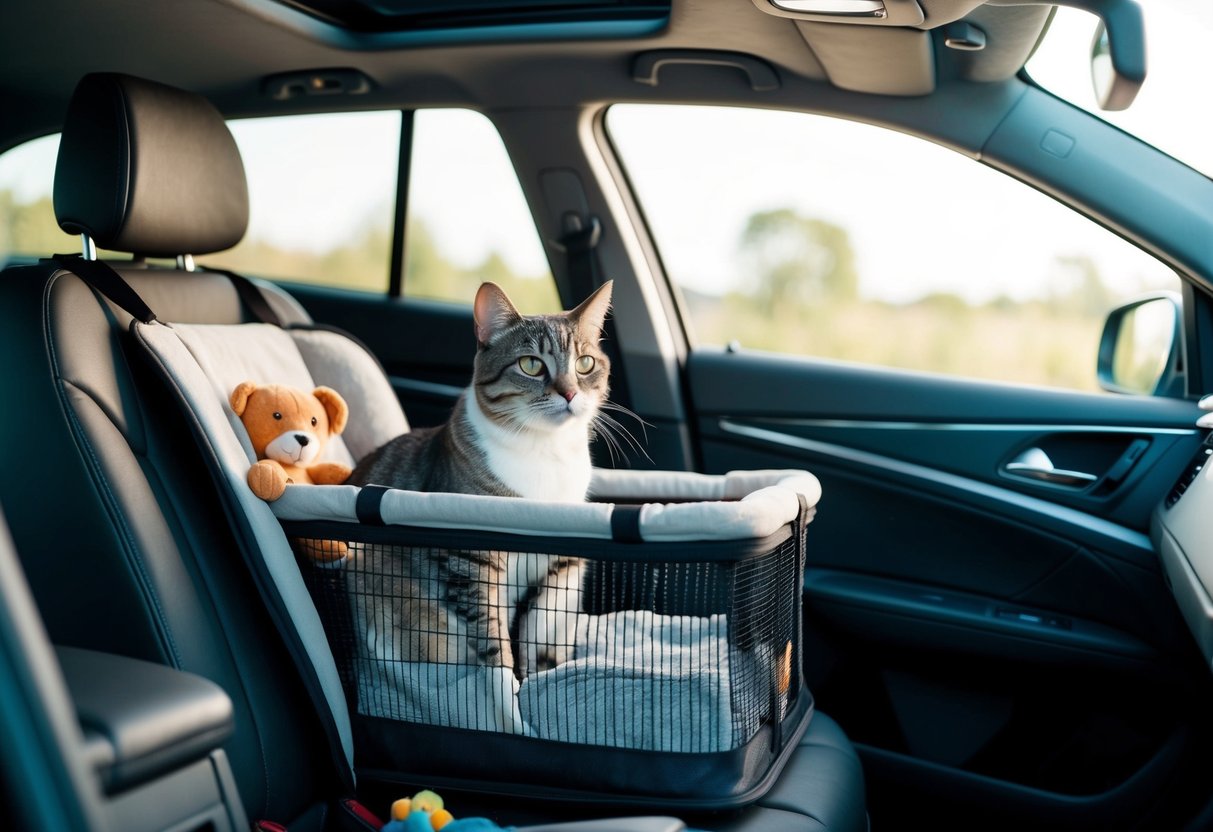
By understanding your cat’s needs and behaviors, you can create a safe environment in the car. Implementing helpful tips can reduce anxiety and make the trip easier for your feline friend.
1: Secure carrier placement
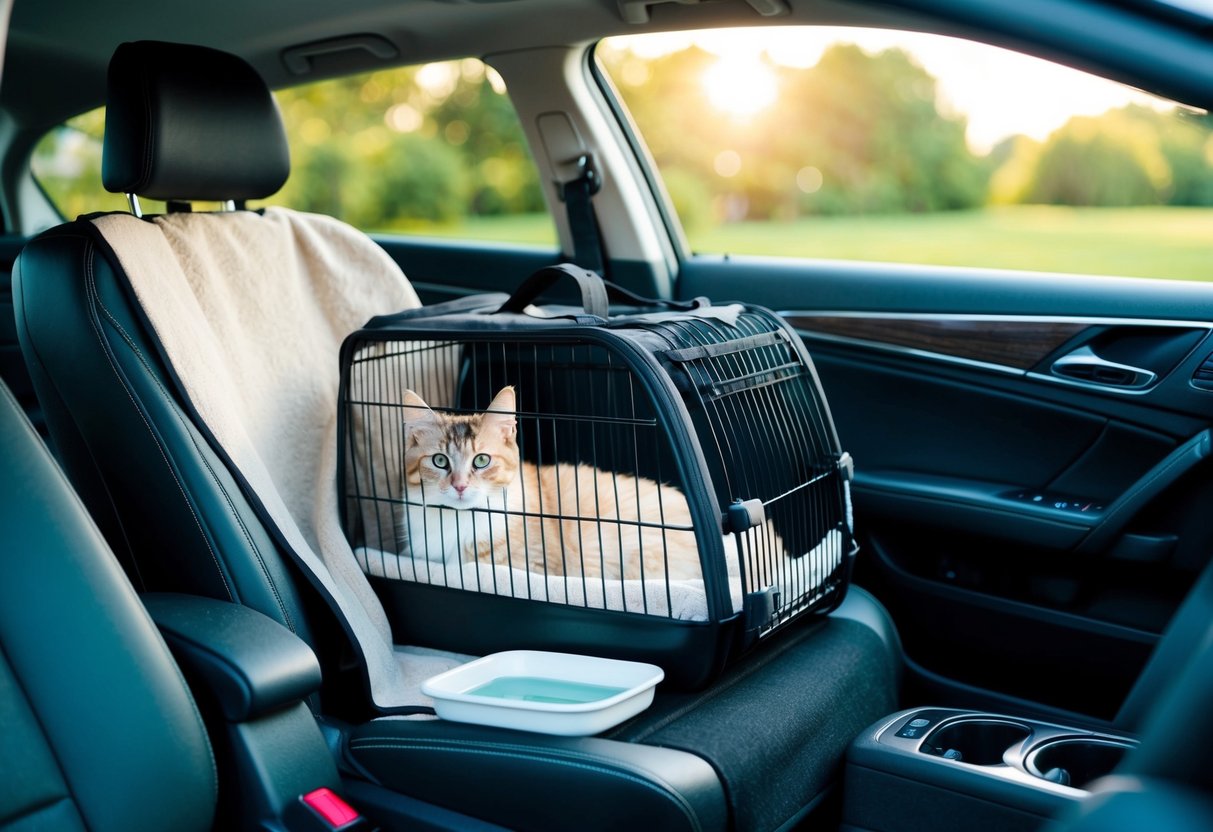
To ensure your cat’s safety during car travel, proper carrier placement is important. The safest spot for your cat carrier is in the back seat. This area is generally more secure than the front, reducing distractions for you while driving.
When placing the carrier, use a seatbelt to secure it. Thread the seatbelt through the handle of the carrier, making sure it is snug and locked. This helps keep the carrier stable during sharp turns or sudden stops.
Avoid placing the carrier in the trunk. Cats can become very anxious in enclosed spaces, especially if they feel isolated. Keeping your cat in the back seat allows for some visibility and can help calm their nerves.
Ensure your cat has enough ventilation. Opening a window slightly can help keep the air flowing. Just make sure the window is not open too wide to prevent your cat from jumping out.
By following these steps, you create a safer and more comfortable travel experience for both you and your cat. Proper carrier placement is an essential part of preparing for the journey ahead.
2: Use pheromone spray
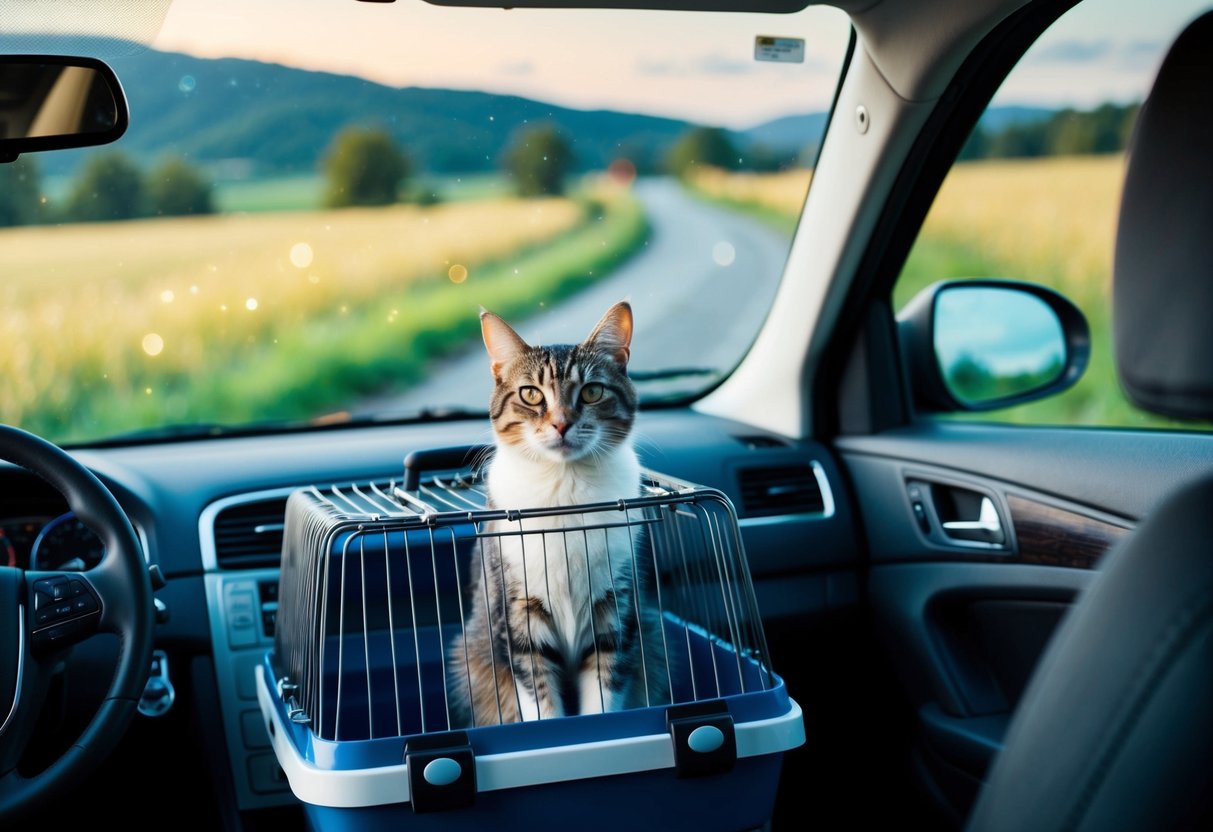
Using pheromone spray can help reduce your cat’s stress during car travel. These sprays mimic natural cat scents that promote calmness. This can make your cat feel safer in a new environment.
Before you start your journey, spray a little of the product inside the carrier or the car. Allow it to settle for a few minutes. Products like Feliway are popular choices and are veterinarian-recommended.
It’s important to apply the spray according to the instructions. You want to ensure it is effective without overwhelming your cat with strong scents. Most cats respond well to these sprays, making them a good option for travel.
Using pheromones is just one part of helping your cat feel secure in the car. Combine this method with familiar items and short trips to create a comfortable experience.
3: Cover carrier with blanket
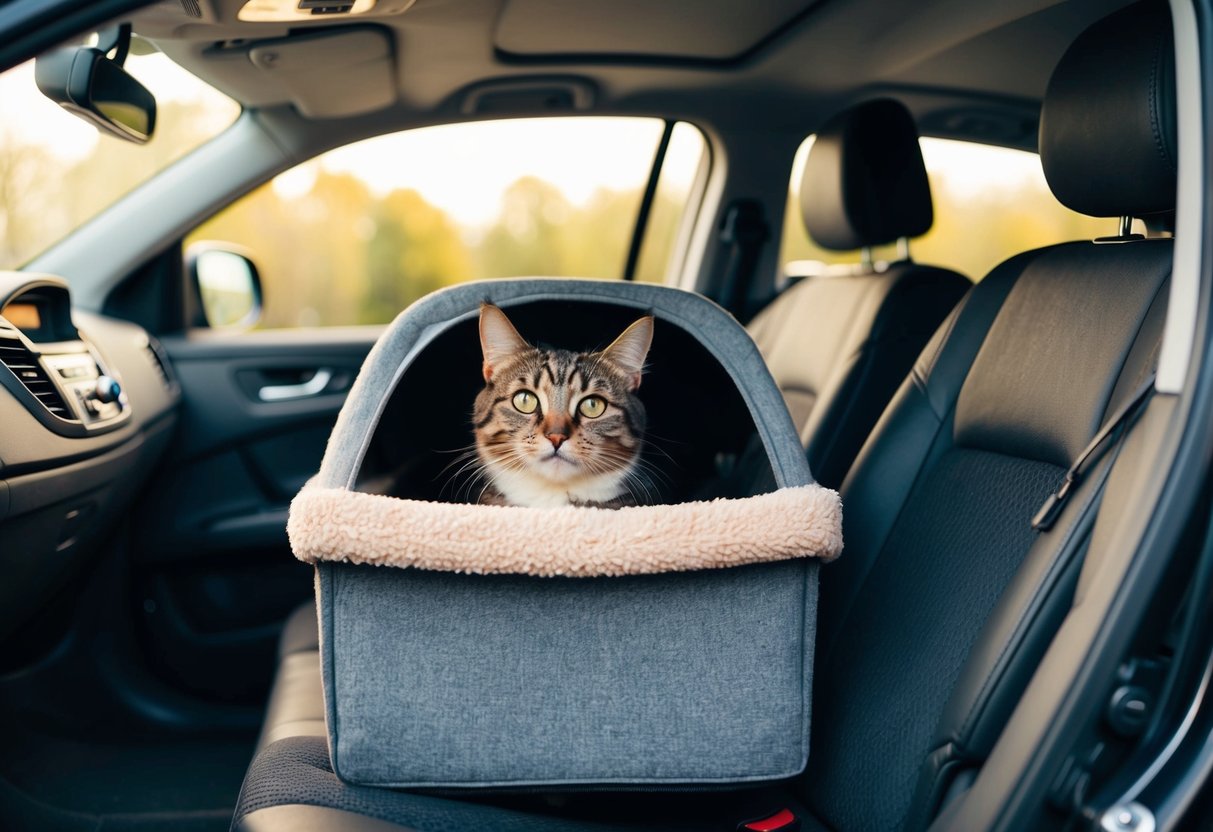
Covering your cat’s carrier with a blanket can create a calming environment. Cats often feel more secure in dark, enclosed spaces. A blanket helps minimize visual stimuli that can be distracting or frightening.
Choose a blanket that has a familiar scent. This can comfort your cat and reduce anxiety during travel. You can also use a lightweight towel if it’s warmer outside.
Make sure to secure the blanket so it doesn’t shift while driving. A stable cover helps your cat feel safe without the blanket becoming a distraction to you.
Monitor your cat’s behavior during the trip. If your cat seems stressed, the blanket can provide a cozy, den-like space. Adjust the covering as needed for ventilation to keep your cat comfortable.
Avoid using heavy fabrics that could trap heat. Ensuring proper airflow is important for your cat’s safety. This simple step can make car travel less stressful for both you and your pet.
4: Water Breaks
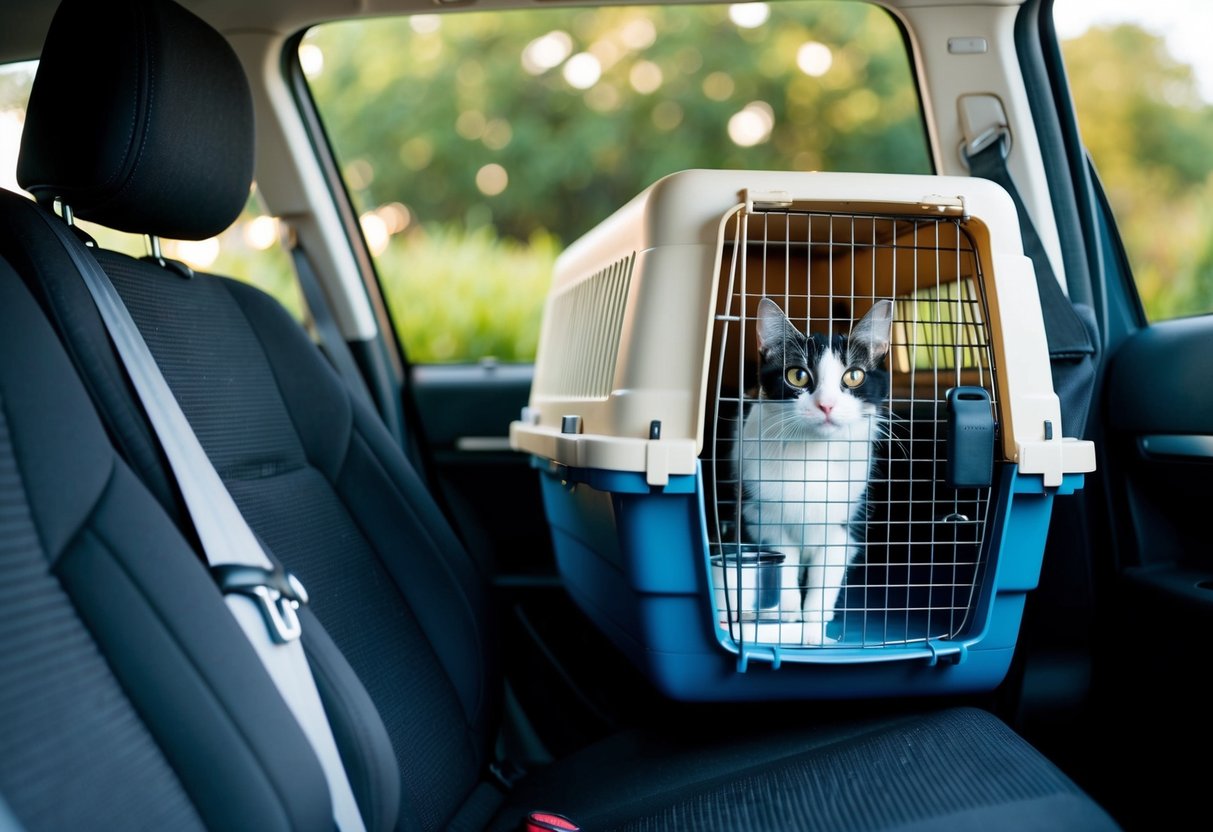
Keeping your cat hydrated during travel is important. Plan regular stops to offer water. This helps keep your cat comfortable and healthy.
Use a travel water bottle or a small, spill-proof bowl. This makes it easy to provide water without making a mess in the car.
Give your cat water every couple of hours. This is especially crucial in warm weather. Cats can get dehydrated quickly, so ensure they have access to fresh water.
If your cat seems restless, stop for a break. Let them drink and stretch a bit. This can help reduce stress for both you and your pet.
Watch how much your cat drinks. If they seem hesitant, try offering water again after a short break. Keeping your cat hydrated during travel contributes to a more enjoyable trip for you both.
5: Frequent Pit Stops
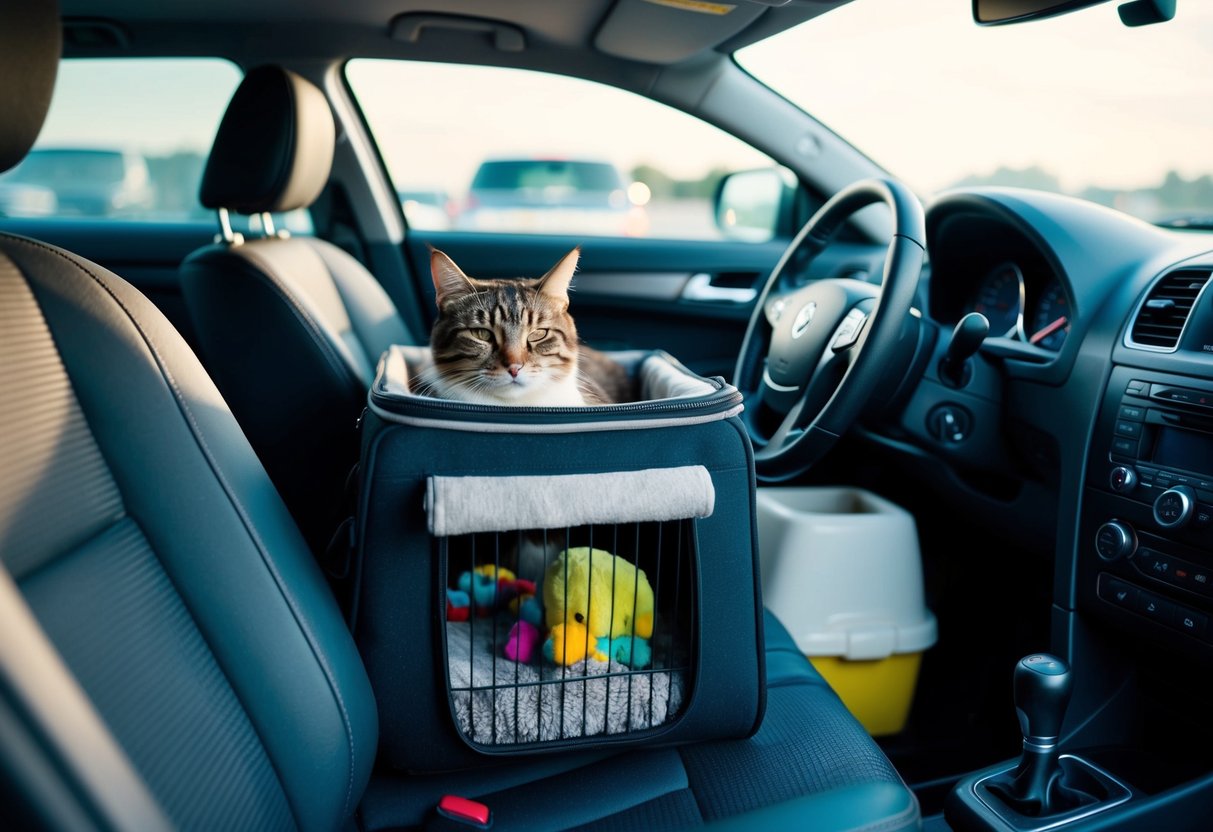
When traveling with your cat in the car, frequent pit stops are essential. These breaks help keep your cat comfortable during the journey.
Plan to stop every 2-3 hours. This will give your cat a chance to stretch, drink water, and use the litter box. Make sure you have a portable litter solution for easy access.
During these stops, keep your cat secure. Use a leash or harness if you let them out of the carrier. This prevents them from bolting in unfamiliar surroundings.
Before your trip, choose pet-friendly locations for stops. Look for areas where your cat can relax safely. Avoid busy rest areas to reduce stress for both you and your cat.
Being mindful of your cat’s needs during pit stops makes the journey smoother. Your cat will appreciate the breaks, and you’ll enjoy a calmer travel experience.
6: Comfortable bedding
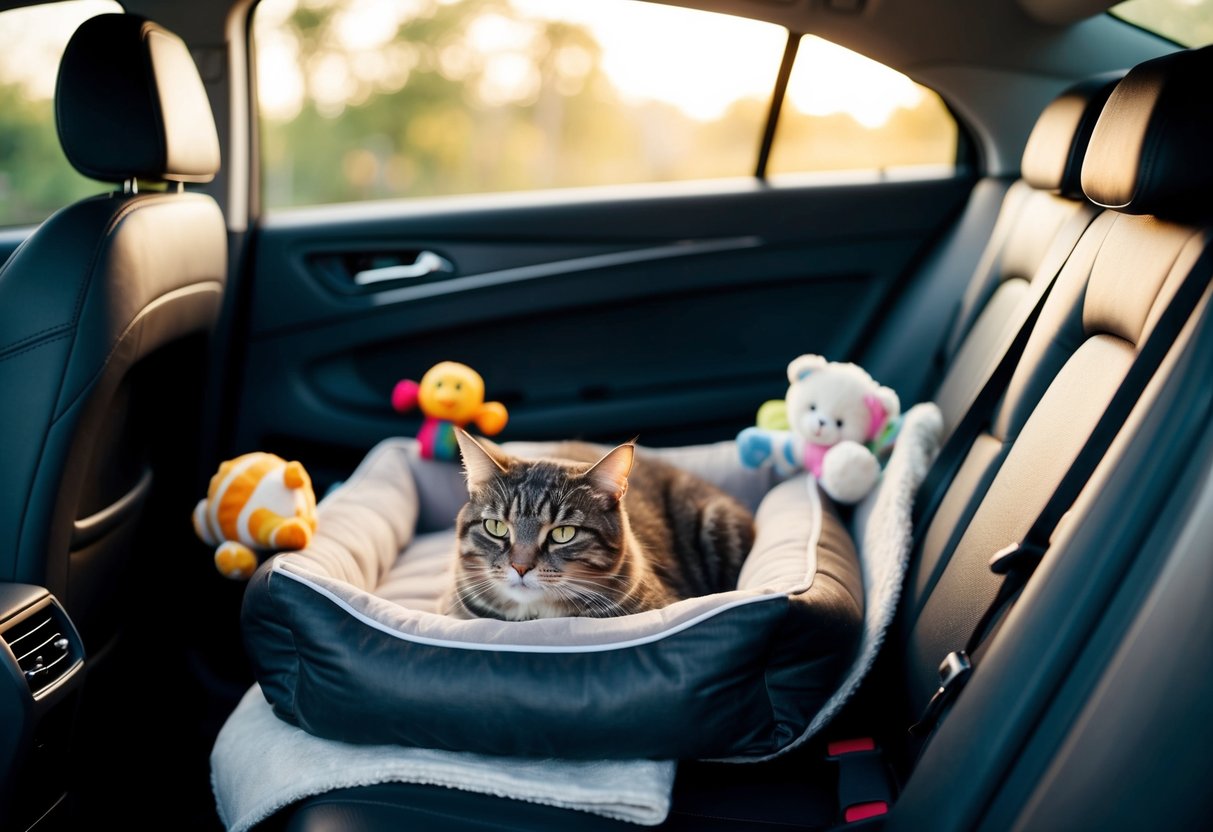
Having comfortable bedding for your cat during a car trip is important for their relaxation. A familiar blanket or bed can help your cat feel secure in the moving vehicle.
Choose bedding that is soft and cozy. Your cat may appreciate a favorite blanket that smells like home. This can calm their nerves during the journey.
Make sure the bedding fits well inside the carrier. It should not be too large to create a cluttered space. A snug fit ensures your cat has a secure spot to rest.
You can also consider adding a pet-safe cushion for extra comfort. Some cats may prefer to lie directly on the fabric rather than in a cushioned area.
Avoid items that may slide around during the trip, as this can be unsettling. Secure the bedding to prevent any movement. This helps create a stable environment for your cat.
If your trip is long, check on your cat regularly. Make sure they look comfortable and have enough space to move slightly. A little attention can go a long way in keeping your cat happy during the ride.
7: Stay calm while driving
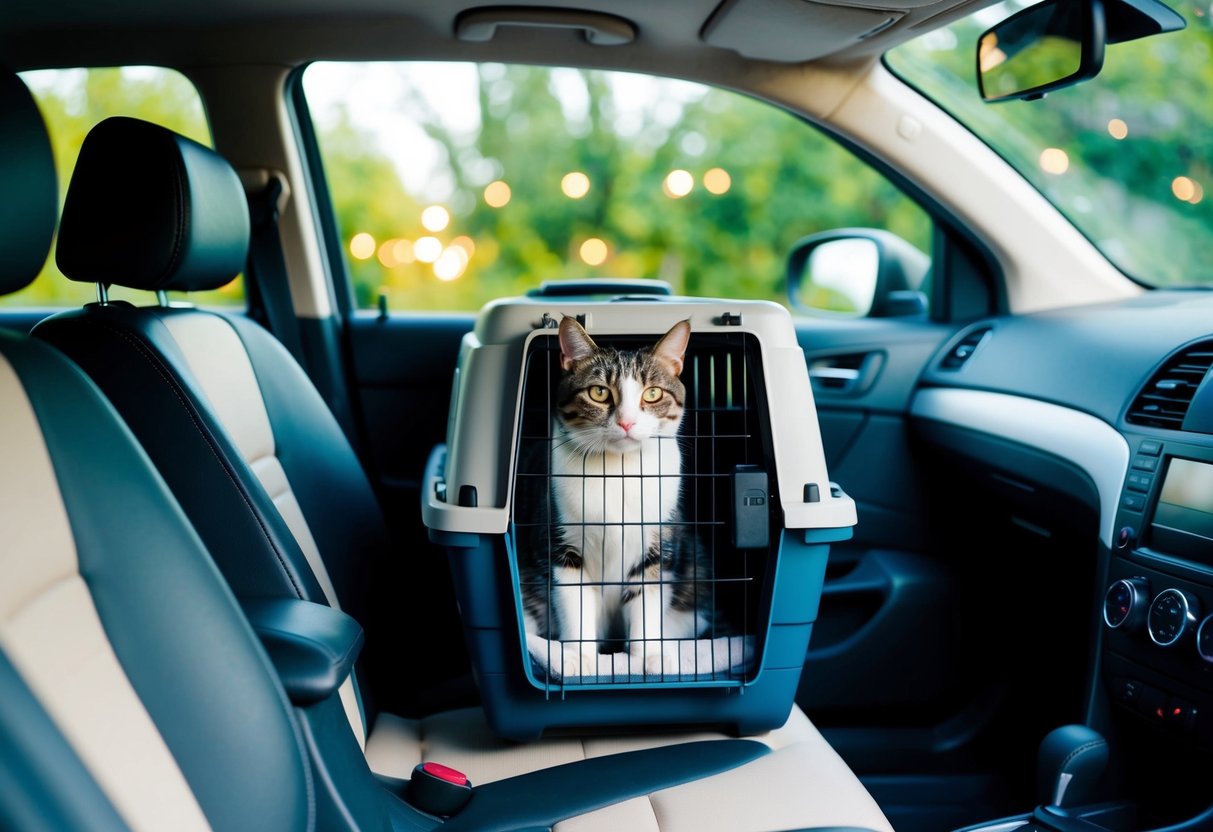
Keeping calm while driving is important for both you and your cat. Your cat can sense your emotions, so staying relaxed can help them feel safer.
Before you start your trip, take a moment to prepare. Make sure your cat is comfortable in their carrier and that you have everything you need. This includes food, water, and any calming sprays or toys.
During the drive, avoid sudden movements. Drive smoothly and obey traffic rules. This reduces stress for your cat. If your cat gets anxious, try speaking softly to them. Your voice can provide reassurance.
If you need to stop, do so safely. Take breaks to give your cat a chance to relax outside the carrier. Always keep them leashed when out of the car.
Keep the temperature in the car comfortable. A hot or cold car can make your cat uneasy. Use the air conditioning or heater to adjust as needed.
Remember, it’s normal for cats to be nervous during travel. With your calm presence, you can help ease their anxiety and make the trip more enjoyable for both of you.
8: Create a travel training routine
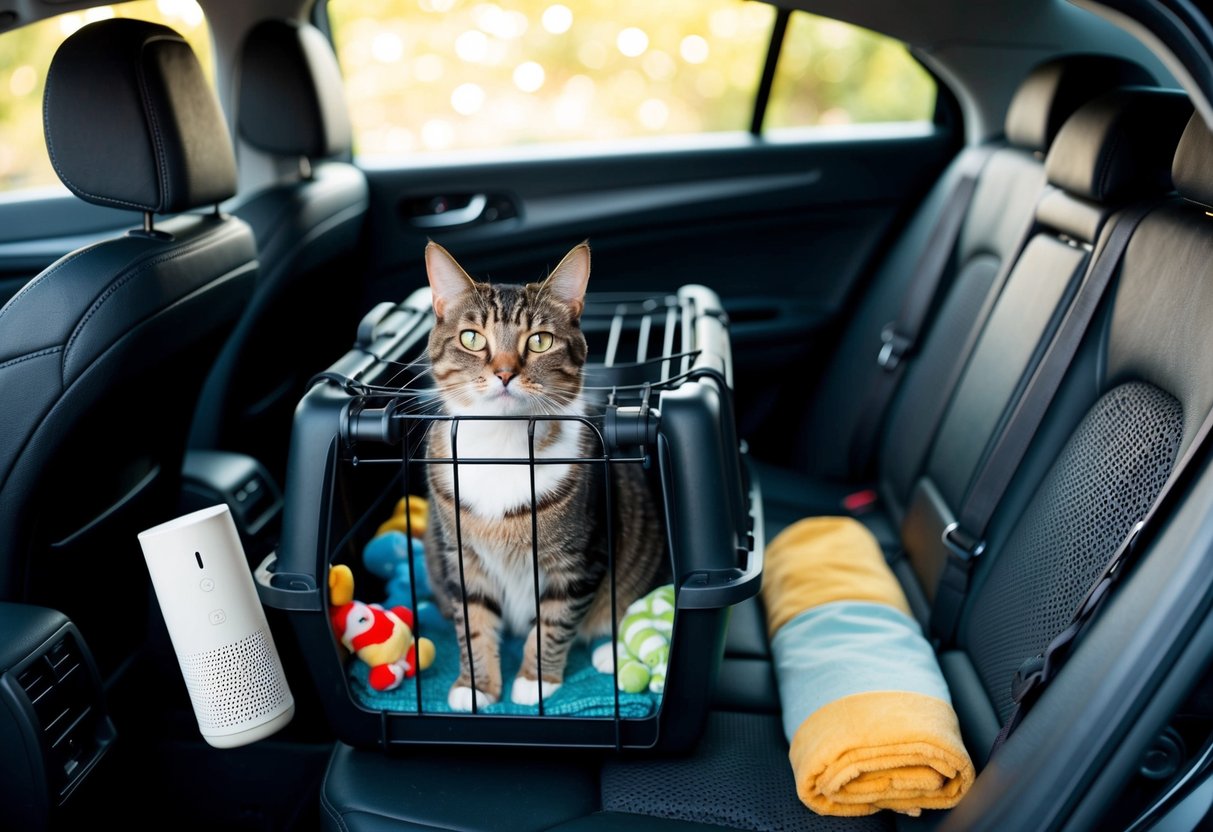
To help your cat adapt to travel, start by creating a training routine. This can be done in a few simple steps.
Begin by introducing your cat to the car while it’s parked. Allow your cat to explore the vehicle without any distractions. Make sure to do this for several days.
Once your cat is comfortable, you can start the engine. Keep the radio off to create a calm environment. Spend time in the car with your cat while the engine runs, rewarding them with treats and praise.
Gradually increase the duration of these sessions. Short trips around your neighborhood can help. Make sure to monitor your cat’s comfort during each experience.
If your cat shows signs of stress, take a step back. Repeat earlier steps until your cat feels secure.
Be patient and consistent. Over time, your cat will learn that car rides can be safe and enjoyable.
9: Secure harness
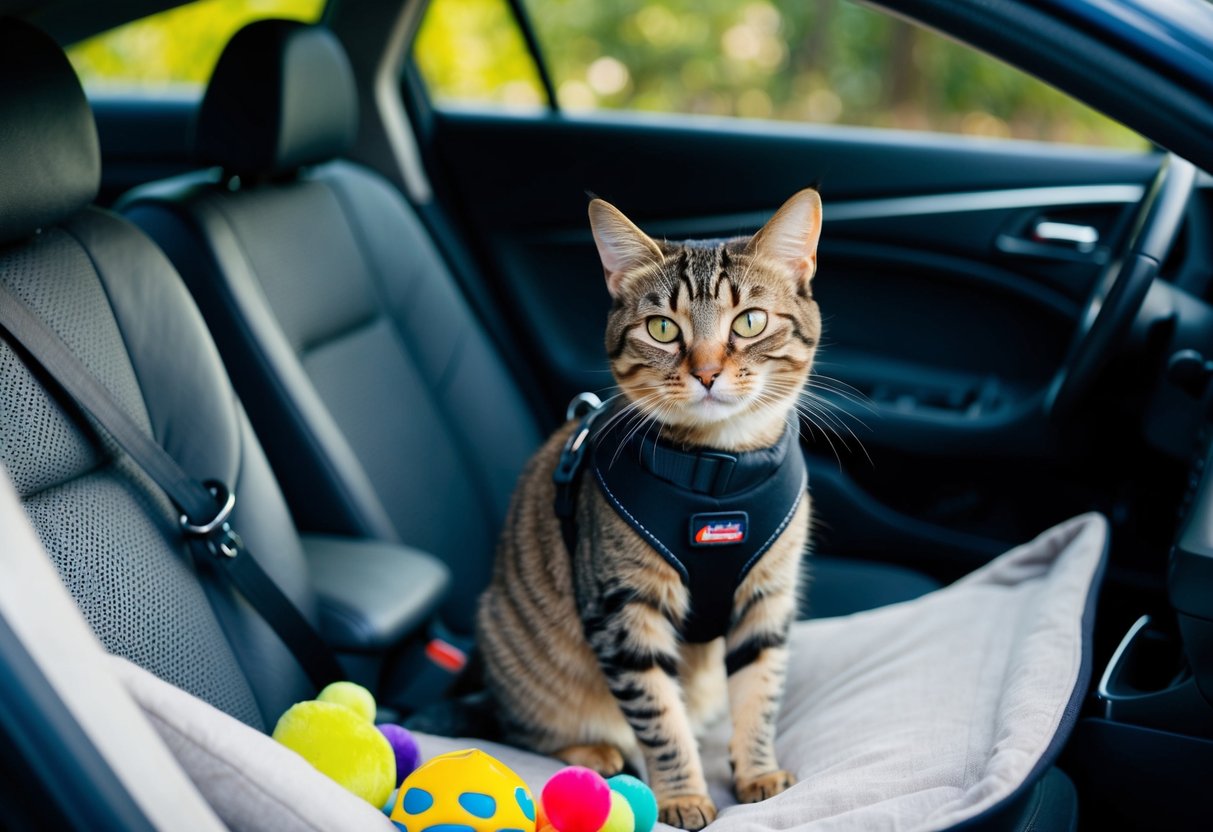
Using a secure harness for your cat is essential when traveling in a car. It keeps your pet safe and prevents unwanted escapes.
Choose a harness specifically designed for cats. Make sure it fits well, allowing for some movement but not too loose. You want to avoid any chance of slipping out.
Before you start your trip, get your cat used to wearing the harness. Let your cat wear it in the house for short periods. This helps them feel comfortable and reduces stress during travel.
When it’s time to enter the car, attach a leash to the harness. This gives you control as you open the door. Keeping your cat secured with a harness prevents sudden jumps out of the car.
While driving, avoid letting your cat roam freely in the vehicle. It can be distracting and dangerous. A secured harness also prevents your cat from getting into your lap while you drive.
Remember to check the harness before each trip. Ensure it hasn’t become worn or damaged to maintain safety during travel. Following these tips will help keep your cat safe and calm on the road.
10: Maintain car ventilation
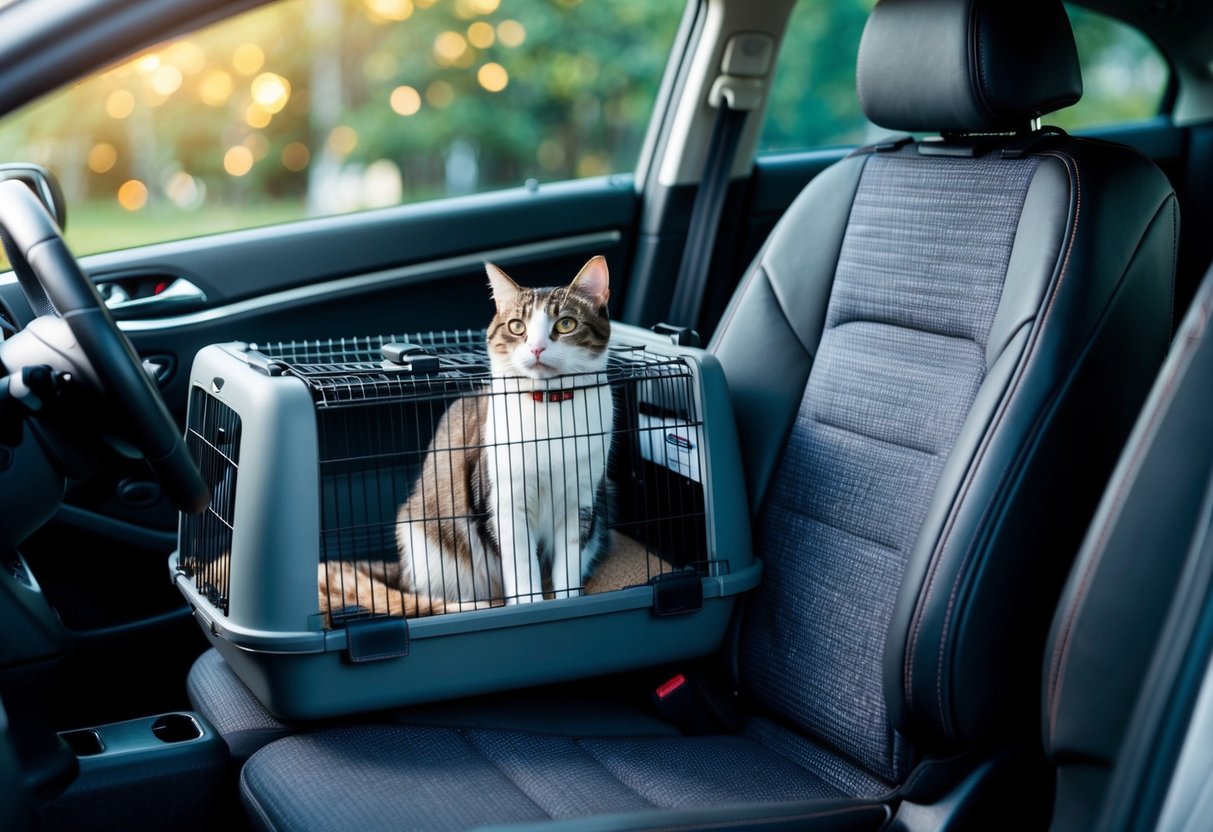
Keeping your cat comfortable during travel is important. One key aspect is ensuring proper car ventilation.
Before starting your trip, check that your cat’s carrier has good airflow. Ideally, it should have ventilation openings on the sides and rear, not just the front. This helps your cat breathe easily and stay cool.
During the drive, avoid extreme temperatures inside the car. On hot days, crack the windows slightly or use the air conditioning. Ensure it’s not too cold either; a comfortable temperature is best for your cat.
Monitor your cat’s behavior. If your cat seems restless or stressed, adjust the ventilation. Fresh air can help calm them down and reduce anxiety.
Stop regularly to let your cat stretch their legs and get some fresh air. This will also help you keep an eye on their comfort level throughout the trip. Taking these steps can make for a more pleasant journey for both you and your feline friend.
Preparing Your Cat for Car Travel
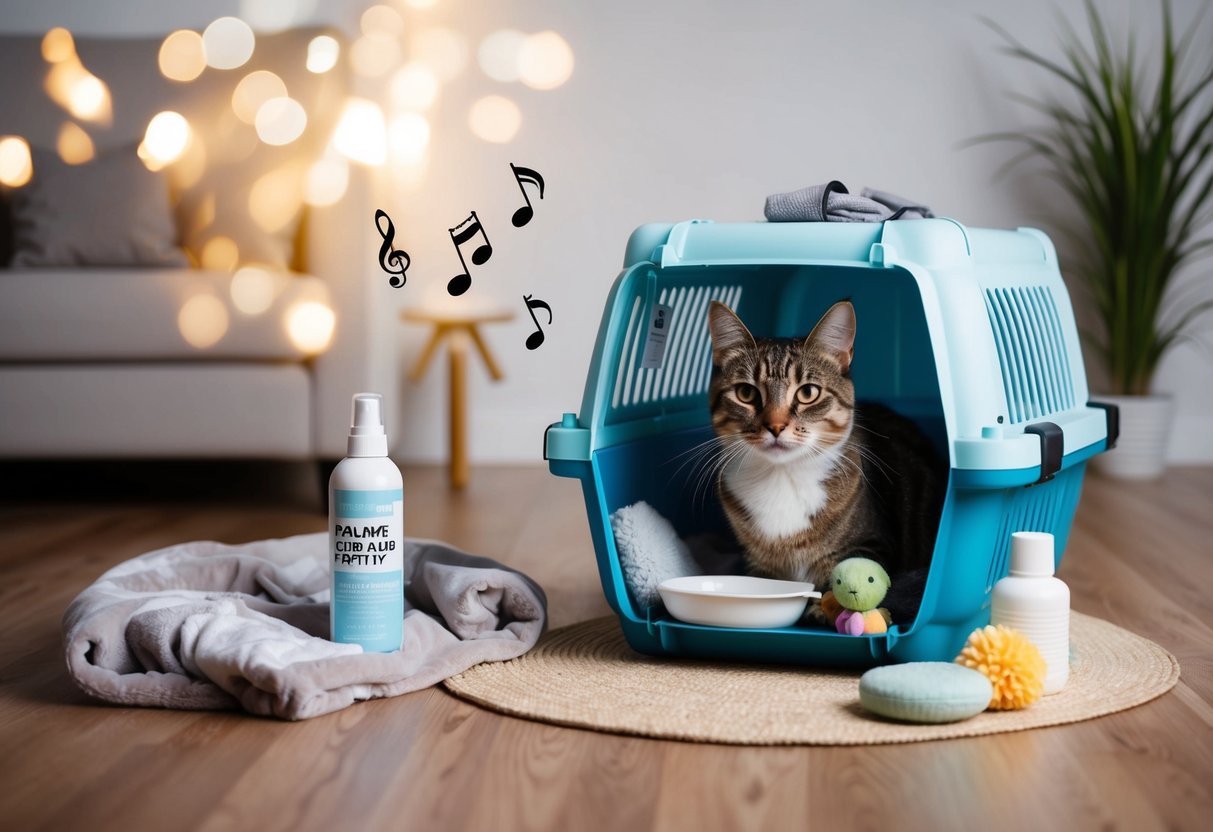
Getting your cat ready for a car trip requires planning and preparation. Two key areas to focus on are familiarizing your cat with the carrier and ensuring a pre-trip vet check-up.
Familiarizing Your Cat with the Carrier
Start by introducing your cat to the carrier weeks before travel. Place the carrier in a quiet area of your home. Leave the door open and add soft bedding, toys, and treats. This helps your cat associate the carrier with comfort and safety.
Encourage your cat to explore the carrier on their own. You can also feed them near the carrier to create positive associations. When your cat seems comfortable, gradually close the door for short periods while rewarding them with treats.
Practice taking short car rides with your cat in the carrier. This will help acclimate them to the movement and sounds of the car. Always reward your cat after each trip to reinforce positive behavior.
Pre-Trip Vet Check-Up
A visit to the vet is crucial before traveling with your cat. Schedule an appointment to ensure your cat is healthy and up-to-date on vaccinations. Discuss any specific concerns you might have about traveling.
Ask your vet for advice on managing travel anxiety. They may suggest calming products, such as pheromone sprays or natural remedies. Ensure you have the necessary medications if your cat requires them.
Obtain a health certificate from your vet if you are traveling across state lines. This document may be required by some states. Being prepared with health-related paperwork can make your trip smoother and help avoid issues along the way.
Ensuring Safety and Comfort During the Journey
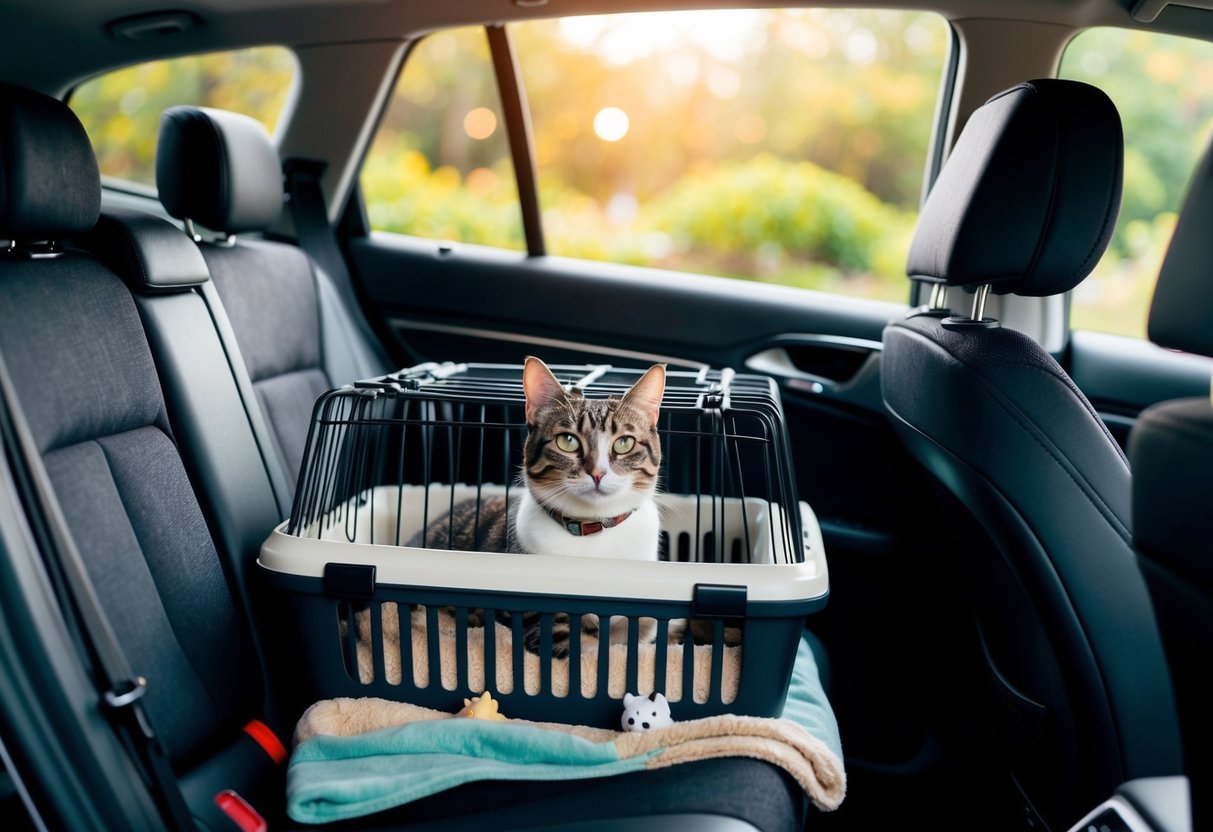
To keep your cat safe and comfortable during car travel, you must pay attention to how you secure their carrier and monitor the environment inside the vehicle. Both aspects are crucial in ensuring a smooth journey for you and your feline companion.
Securing the Carrier in the Car
Properly securing your cat’s carrier in the car is vital for safety. Start by placing the carrier on the floor behind the front seat or in the back seat, away from airbags. This minimizes the risk of injury in case of sudden stops.
Use a seatbelt to strap the carrier down, ensuring it doesn’t move around. This keeps your cat stable and calm. It’s also essential to choose a well-ventilated carrier that allows air to flow. Make sure the door latches securely and there’s no chance of it opening during travel.
You might want to cover the carrier with a light blanket. This can help reduce stress by providing a cozy environment for your cat. Always check that your cat is comfortable and has enough space to move around a bit.
Monitoring Temperature and Ventilation
Keeping a comfortable temperature in the car is key for your cat’s well-being. Before starting your trip, check the weather. Cats can overheat quickly, so it’s important not to leave them in the car unattended, even for a short time.
During travel, ensure that the climate control system is functioning. Open windows slightly for ventilation, but avoid letting your cat climb out. Use sunshades to block direct sunlight, keeping the temperature consistent.
Monitor how your cat reacts to the environment. If they seem restless or panting, check to see if they are getting too hot. Make sure to take breaks during longer trips to allow your cat to stretch and drink water, ensuring they stay hydrated and comfortable.

